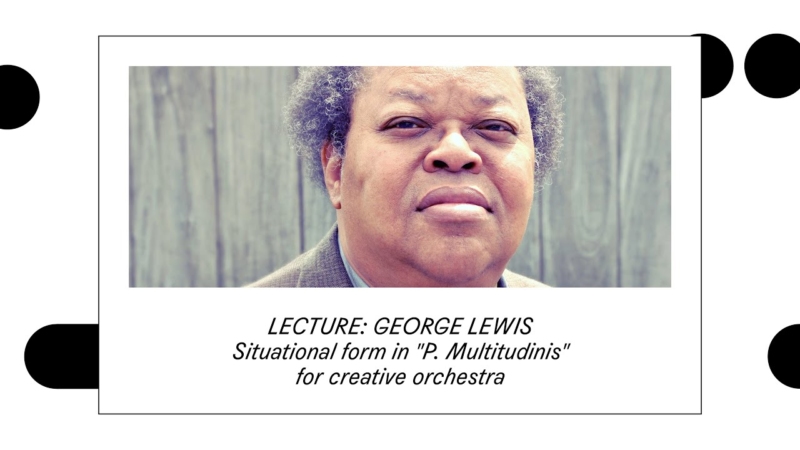LECTURE GEORGE LEWIS
Situational form in "P. Multitudinis" for creative orchestra
“Situational form in P. Multitudinis for creative orchestra”
George Lewis, Columbia University
Fellow, Wissenschaftskolleg zu Berlin, 2020-21
P. Multitudinis (George Lewis, 2018) is a situational-form work that is also partially open in terms of scale and instrumentation. The full complement of the work includes a trio with piano, percussion, and electronics; a trio with voice, saxophone, and trumpet, a string quartet, a woodwind quintet, one r more “mobile percussionists,” a “mobile conductor,” and “The Multitude,” an open-instrumentation ensemble for any number of players.
There is no centralized score, but performers are given two types of material: first, precisely notated passages to be varied as needed, and second, a set of tasks laid out on a grid that suggest ways of relating to the sonic environment being created. The choice of material is pursuant to collective decision-making in performance, and players as asked to create new material in initial congruence with the current musical situation—hence, situational, rather than open form.
The work’s title comes from Baruch Spinoza’s Tractatus Politicus (Political Treatise), written in 1675-76, unfinished and published posthumously in 1677, and later banned:
Civitatis jus potentia multitudinis, quæ una veluti mente ducitur, determinatur. At hæc animorum unio concipi nulla ratione posset, nisi civitas id ipsum maxime intendat, quod sana ratio omnibus hominibus utile esse docet.
“The right of a commonwealth is determined by the power of a people that is guided as though by a single mind. But this union of minds could in no way be conceived unless the chief aim of the commonwealth is identical with that which sound reason teaches us is for the good of all men.”
(Spinoza: Complete Works, translated by Samuel Shirley)

